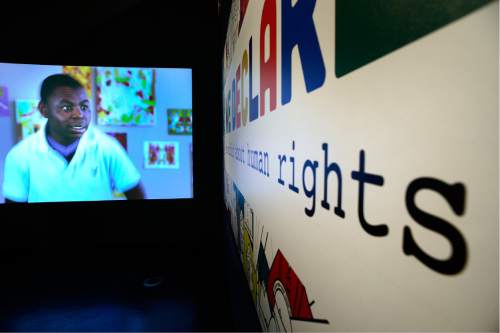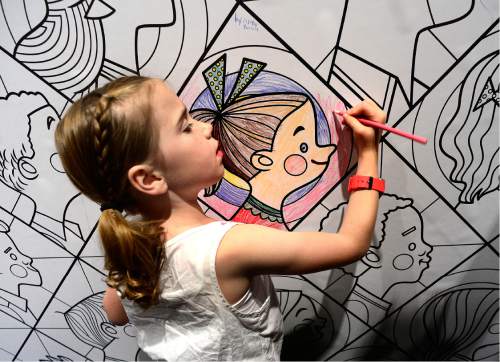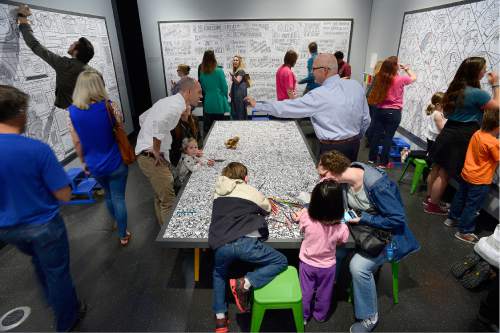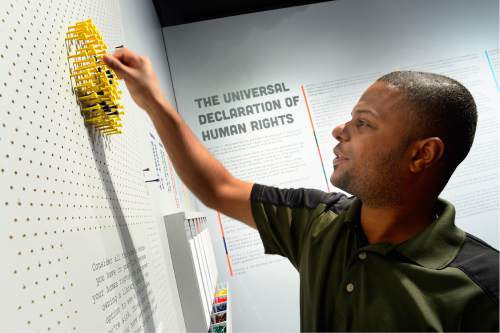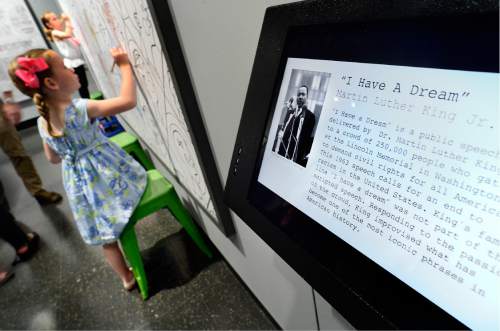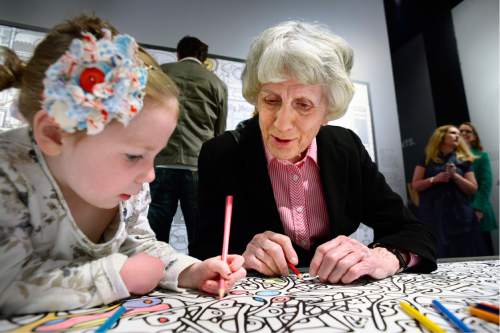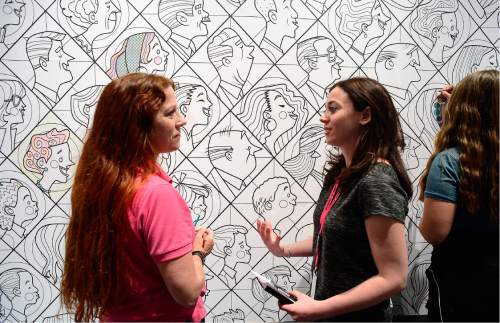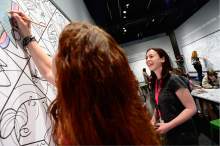This is an archived article that was published on sltrib.com in 2016, and information in the article may be outdated. It is provided only for personal research purposes and may not be reprinted.
Each year, some 1,200 people fleeing war and injustice abroad settle in Utah, hoping to experience the security, dignity and rights that all members of humanity deserve. When they arrive, refugees have little with them but a name and hope, having left everything else behind.
A new exhibit at The Leonardo honors human rights and those who have been denied them, and invites youngsters to reflect on the meaning of freedom, fairness and peace. Exhibit visitors are even encouraged to complete some of the art work, eight 14-foot-long coloring panels. Kids fill them in using colored pencils as they listen to famous speeches from human rights luminaries such as Martin Luther King and Malala Yousafzai, the Pakastani girl whom the Taliban shot for promoting education.
"Starting a conversion about human rights is difficult. We created the exhibit as a tool kit to start that conversation," said Marissa De Simone, The Leo's exhibit developer who designed "We Declare." Its opening Saturday was timed to anchor the museum's Weekend of Welcome, a celebration that runs through Sunday. Organizers distributed 1,500 tickets to Salt Lake's refugee families to attend the Salt Lake City science museum named for Leonardo Da Vinci.
"This exhibit takes a step back and asks, 'what is human rights?'" executive director Alex Hesse said. "It is how we act toward one another. It is not the law."
The exhibit is staged in The Leo's downstairs gallery until June, when it will be moved upstairs to make way for an upcoming exhibit on flight. "We Declare" will remain on display for several months in the museum's Human Rights Gallery, which currently hosts the "No Fixed Address" exhibit on homelessness.
De Simone said she hopes the exhibit will spark ideas that will have an impact on the world. On Saturday, however, visitors were having an impact on the exhibit.
Milli Beach, 12, was busy attacking one of the coloring panels, filling in the argyle pattern of a dress worn by a girl who looked suspiciously like her sister.
"It's fun to color things here where everyone can see it and everyone can do it," she said. Her dad, Bountiful artist Bryan Beach, created some of the panels, incorporating the likenesses of his five children into the works.
The revered Utah advocate for the homeless, Pamela Atkinson, worked with one young girl as she colored in images. She said Utah has done well integrating refugees, as many as 30,000 since the 1970s when Vietnamese began arriving.
"I look at everybody as being equal. The only thing different is we all have unique skills and perspectives. We are all part and parcel of the same race, human beings," Atkinson said. "We have to face the fact that everyone has the right to live in this world in their own way."
Another interactive display encourages people to create images on a peg board where Ali Abid, a 31-year-old from Iraq, was arranging colored pegs.
He once ran a shop in Baghdad that sold computer equipment, but war forced him to immigrate to the U.S. nearly four years ago. He settled in Utah and now works as an employment specialist for Catholic Community Services (CCS), helping refugees find jobs that are right for them.
His pegs came together to form a smiling face.
"You need to be the change you would like to see in the world," Abid said. "A smile is the power. It is the language that is easy to understand all over the world."


